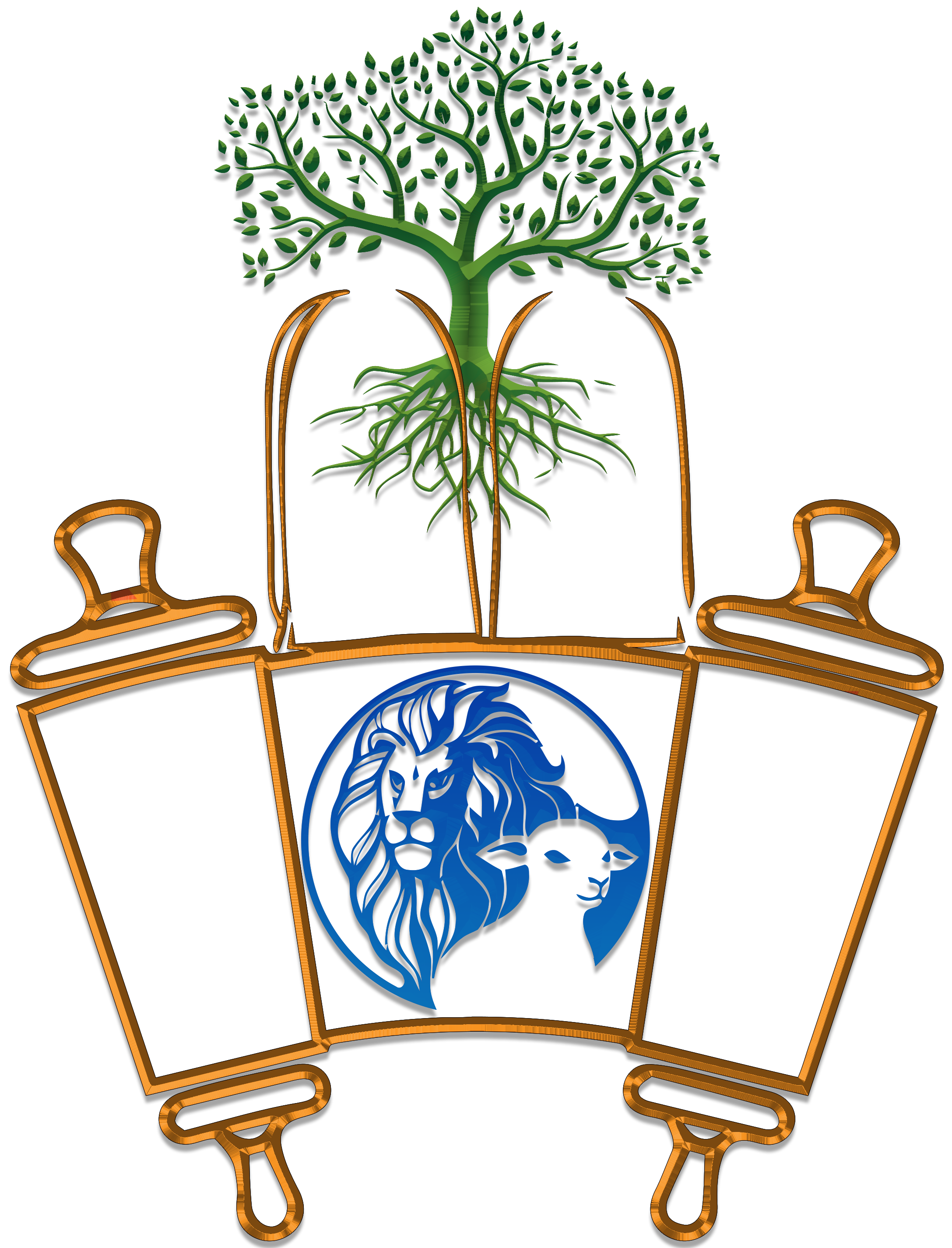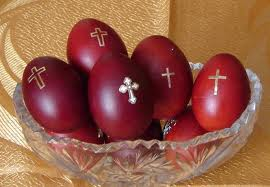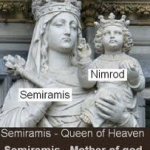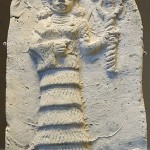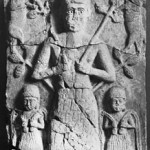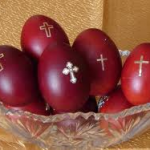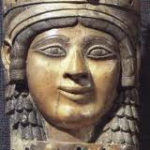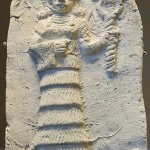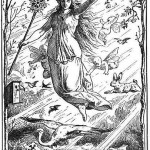The (pagan) History of Easter
Easter is a day that is honored by nearly all of contemporary Christianity and is used to celebrate the resurrection of Jesus when the angel rolled away the stone and the risen savior fulfilled the promises, forever destroying the works of Satan. The holiday often involves a church service at sunrise, a feast which includes an “Easter Ham”, decorated eggs and stories about egg-laying rabbits. We get the songs of Peter Cottontail hopping down the bunny trail and children finding the hidden Easter Baskets and eggs.
Such joy and fun as the children dress in their best outfits, most of which were purchased on overload credit cards just for the days activities. People who never step foot in a church the rest of the year, come out of hiding from God to make their presence known to Him. And a great manipulator for parents, lying to their children that “if your not good, the Easter Bunny will not bring you a basket this year.” Carries weak parents from December to March, maybe April if Easter is late that year.
But what is the truth?
For hose who love truth seek it by asking questions, and many questions must be asked regarding the holiday of Easter. Is it truly the day when Jesus arose from the dead? Where did all of the strange customs come from, which have nothing to do with the resurrection of our Savior? Read along and discover some answers and then being informed draw your conclusions if it is in the best interest for you and your family to continue in this tradition.
The history of the holiday.
“Christians” were not the only ones who celebrated a festival called “Easter.” “Ishtar“, which is pronounced “Easter” was a day that commemorated the resurrection of one of their gods that they called “Tammuz”, who was believed to be the only begotten son of the moon-goddess and the sun-god. In those ancient times, there was a man named Nimrod, who was the grandson of one of Noah’s son named Ham.
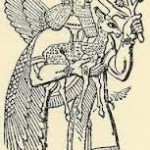 Ham had a son named Cush who married a woman named Semiramis.Cush and Semiramis then had a son named him “Nimrod” known as the mighty hunter. After the death of his father, Nimrod married his own mother and became a powerful King.
Ham had a son named Cush who married a woman named Semiramis.Cush and Semiramis then had a son named him “Nimrod” known as the mighty hunter. After the death of his father, Nimrod married his own mother and became a powerful King.
The Bible tells of of this man, Nimrod, in Genesis 10:8-10 as follows: “And Cush begat Nimrod: he began to be a mighty one in the earth. He was a mighty hunter before the Lord: wherefore it is said, even as Nimrod the mighty hunter before the Lord. And the beginning of his kingdom was Babel, and Erech, and Accad,and Calneh, in the land of Shinar.”
Nimrod became a god-man to the people and Semiramis, his wife and mother, became the powerful Queen of ancient Babylon. Nimrod was eventually killed by an enemy, and his body was cut in pieces and sent to various parts of his kingdom. Semiramis had all of the parts gathered, except for one part that could not be found.
That missing part was his reproductive organ. Semiramis claimed that Nimrod could not come back to life without it and told the people of Babylon that Nimrod had ascended to the sun and was now to be called “Baal”, the sun god. Queen Semiramis also proclaimed that Baal would be present on earth in the form of a flame, whether candle or lamp, when used in worship. Semiramis was creating a mystery religion, and with the help of Satan, she set herself up as a goddess.
Immaculate Conception?
Semiramis claimed that she was immaculately conceived, being impregnated by her dead, cut up husband Nimrod, through the rays of the sun. She taught that the moon was a goddess that went through a 28 day cycle and ovulated when full. She further claimed that she came down from the moon in a giant moon egg that fell into the Euphrates River. This was to have happened at the time of the first full moon after the spring equinox.
Semiramis became known as “Ishtar” which is pronounced “Easter”, and her moon egg became known as “Ishtar’s” egg.” Read more about this here. Ishtar has a story of her own, being reborn and descending in an egg upon the Euphrates river , bursting open and out comes a bare-breasted fertility goddess who had to prove herself as a deity. So she turned her sons favorite animal, a rabbit, into an egg laying rabbit.
The son that she brought forth was named Tammuz. Tammuz was noted to be especially fond of rabbits, and they became sacred in the ancient religion, because Tammuz was believed to be the son of the sun-god, Baal. Tammuz, like his supposed father, became a hunter. The day came when Tammuz was killed by a wild pig.
Queen Ishtar told the people that Tammuz was now ascended to his father, Baal, and that the two of them would be with the worshippers in the sacred candle or lamp flame as Father, Son and Spirit. Ishtar, who was now worshipped as the “Mother of God and Queen of Heaven”, continued to build her mystery religion.
The queen told the worshippers that when Tammuz was killed by the wild pig, some of his blood fell on the stump of an evergreen tree, and the stump grew into a full new tree overnight. This made the evergreen tree sacred by the blood of Tammuz.
She also proclaimed a forty day period of time of sorrow each year prior to the anniversary of the death of Tammuz, during this time, no meat was to be eaten. This time was called the weeping for Tammuz. Worshippers were to meditate upon the sacred mysteries of Baal and Tammuz, and to make the sign of the “T” in front of their hearts as they worshipped. They also ate sacred cakes with the marking of a “T” or cross (Hot-Crossed Buns) on the top.
Every year, on the first Sunday after the first full moon after the spring equinox, a celebration was made. It was Ishtar’s Sunday and was celebrated with rabbits and eggs. Ishtar also proclaimed that because Tammuz was killed by a pig, that a pig must be eaten on that Sunday.
As the holiday further developed, priests would impregnate virgins during sexual rituals to please “the queen of the universe” at this special time and then sacrifice the previous year’s offspring to represent her son’s death at the hand of a pig. A cave of Tammuz can still be found today in Israel.
The blood of these murdered infants would then be used to color the Ishtar eggs completing the ceremony. Even today the Greek Orthodox Church requires the eggs to be died blood red in keeping with this practice.
Conclusion
Even the most unschooled person can see the ties to the paganism of Easter. What does this paganism have to do with the glorious resurrection of our Messiah? The sad fact is that many contemporary “Christian” churches have allowed the infiltration of Satan into their teachings and practices. They can not find substantiation in the Bible for their practices and they know it. Yet they keep right on spreading the teaching and lies of Satan, doing the will of their father. The father the Bible says is the father of all lies, Satan. Digging even further leads us into the deep pagan rituals of the catholic church and the “Queen of Heaven, Queen of the Universe”, Mary herself as being worshipped. Truly can the Roman Catholic Church system be of the father?
The truth is that Easter has nothing whatsoever to do with the resurrection of our Yeshua the Messiah and has everything to do with continued pagan practices.
Please leave a comment or a question.
